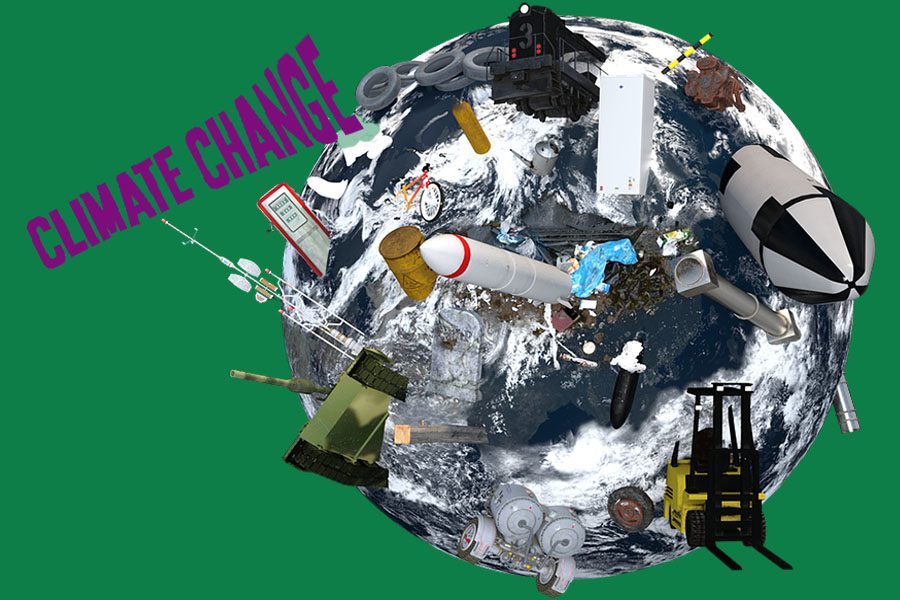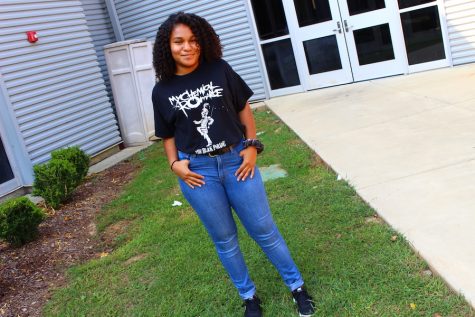Climate Change: It’s Not a Debate
January 10, 2019
The Washington Post recently detailed how the fossil fuel industry incited the media debate about climate change by using the strategy of false equivalence. False equivalence is defined as “a logical fallacy in which two completely opposing arguments appear to be logically equivalent when in fact they are not.”
Some people, including some of those in power, do not believe in climate change despite the evidence. 28% of students in one Bob Jones class either did not believe in it or did not care. Most acknowledged that it was real and expressed concern.
Although global warming is a regular cycle for Earth, humans have accelerated it. Therefore, it is unnatural. Just since the late 1800s, temperatures have risen 1.85°F. Before long, people will have to move, and this moving is not just families and businesses near coastlines.
Others argue there is no need to worry about it. A few degrees won’t kill anyone. The problem is that coral reefs are very sensitive to temperature as well as pollution. It is true they need warm climates but they had that before the temperature began rising. There has been a large amount of coral bleaching which is when coral dies due to stress.
Of those who believe that climate change is real, what do they think causes it? Student Margaret Jenkins said that climate change is caused by “too much Co2 in the earth’s atmosphere because of the burning of fossil fuels. It traps the sun’s heat, and this causes the greenhouse effect to be too strong, resulting in increased global temperatures and an increase in the frequency and intensity of severe storms. It also causes the Arctic and Antarctic ice to melt at a faster rate, causing a rise in sea levels.” Student Madeline Shrode said it is caused by “unregulated corporations that just cover up environmental red flags as opposed to actual fixing them when issues arise.”
Climate change is actually caused by many factors. It is caused partly caused by burning non-renewable resources such as coal and fuel. In fact, carbon dioxide causes 64% of man-made global warming (17% is by nitrogen). Deforestation has also contributed to it because there are less plants to absorb the large amounts of Co2. Livestock farming definitely does not do anything to help as well. The animals produce a lot of methane in waste. Many of the companies do not dispose of it properly.
Climate change affects more than just temperature. Sea levels are rising because of this climate change. As water gets hotter, it expands. Another cause of rising sea levels are the melting glaciers and ice sheets. In some glaciers, there are trapped methane bubbles which, if released, could amplify global warming. With the methane being released and warming the Earth more, it heats up more glaciers.
Not only have humans injected harmful gases into the atmosphere, they have also scattered a litter all over the Earth in trash piles and landfills. More than that, there is a giant collection of trash that even has its own name: The Great Pacific Garbage Patch. It is located between Hawaii and mainland America. This monstrosity is twice the size of the state of Texas (or three times the size of France). There are roughly 250 pieces of trash for each person alive. That adds up to about 80,000 tons of trash. The contents of it can range from microplastics to large fishing nets.
How can humanity save the planet? Student Cooper Skelly said we can slow down global warming by using less non-renewable sources. Margaret Jenkins proposed that we could “invest in alternative energy, especially wind and solar, and try to conserve resources and flush toilets less.” Other students thought we should all recycle more and create less waste that turns into pollution.
Every little effort helps. By unplugging devices when they are not being used, driving less, and eating local, humanity can work towards making the world more inhabitable. Although there is no real way to “solve” global warming and climate change at the local level, each person can work toward making his or her carbon footprint smaller.
While attempting to reverse climate change, humans also need to adapt through innovation and ingenuity. It’s a problem that the best and brightest will need to solve before it’s too late. Careers in this area include sustainability, renewable energy, and agriculture, just to name a few.


